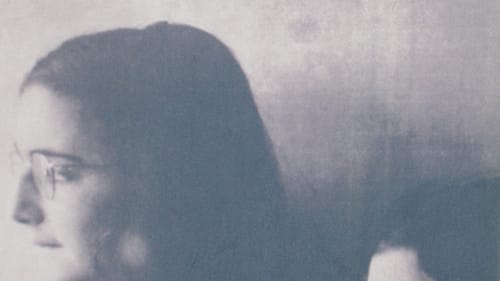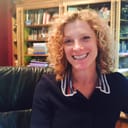Stay in the Loop
BSR publishes on a weekly schedule, with an email newsletter every Wednesday and Thursday morning. There’s no paywall, and subscribing is always free.
Is Anne Frank "too Jewish"?
The All Lives Matter-ing of Anne Frank

I haven’t seen either People’s Light and Theatre’s or Drexel University’s multicultural productions of The Diary of Anne Frank, it’s true. I’m sure the casts and teams did fine work. But even without seeing them, I know this much: Anne’s story isn’t multicultural; it’s Jewish.
To understand why the approach People’s Light and Drexel are taking is a problem, let’s start at the beginning: Frances Goodrich and Albert Hackett’s original production, which premiered in 1955, consciously de-Judaized Anne to make her more “universal.” According to Francine Prose, who wrote her own book about the diary, “universal,” by design, meant “the antonym of Jewish.”
As Ruth Franklin noted in a 2011 New Republic essay, Goodrich and Hackett changed the diary’s emphasis, inventing equivocations such as, “We’re not the only people that have had to suffer … There have always been people that have had to. . . . Sometimes one race . . . sometimes another.”
One step forward, two steps back
The real Anne was unequivocal about the particular Jewishness of her suffering and about her perpetual otherness. She wrote, “We can never become just Netherlanders, or just English, or just . . . representatives of any other country for that matter, we will always remain Jews, but we want to, too.”
It’s important to remember that the Nazis had to affix yellow stars to Jews’ clothing to differentiate them from their neighbors. The story of Ashkenazi Jews (and of Jews in general, whether Sephardi, Mizrahi, or of any other ethnic Jewish enclave on nearly every continent) is a story about the failure of assimilation. No matter what they looked like, how hard they tried to forget, how high they rose, they always remained Jews. We’ve since learned it’s marked in our DNA, though that hardly matters.
The play’s 1997 Broadway production, revised by Wendy Kesselman and featuring Natalie Portman as Anne, restored much of the story’s darkness — darkness that originated with Anne — along with its Jewishness. This is the version People’s Light and Drexel use, though, of course, their emphasis on multiculturalism once again removes the real-life girl from the picture.
In an interview with the Jewish Exponent, People’s Light director David Bradley explained, “As we bring together the artists we’ve brought together, coming from all their different perspectives, we’re lifting up that capacity of theater to help us step into a story and make connections to it and activate empathy.” I wish the reporter had asked this follow-up question: “Why is there an empathy gap when it comes to Jews telling their own stories onstage?”

The company’s Broadway World casting call specified, “We are particularly interested in a multi-racial cast representing many heritages,” and took special steps to ensure cultural diversity at its auditions. Producing director Zak Berkman, in a note on the theater’s website, wrote, “We discussed how voices and ideas often marginalized might be centered in this production.” This would all be admirable if the voices at the center of the (nonfiction) story weren’t already marginalized, and weren't marginalized further by a casting process that once again sought to replace the attic denizens' identities with something more "universal."
Historical revisionism
Drexel’s production also focused on the story’s universality rather than the oppression suffered by Jews during the Shoah. Of course, a university production differs from a professional one in that the cast is limited to enrolled students. Still, in that same Exponent piece, the student who played Anne, Vida Manalang, noted that director Bill Fennelly made a point of telling his cast, “This isn’t your mama’s Anne Frank.”
But what if your mama knew her? This isn’t some abstraction for Jews, who light candles every year on Yom HaShoah so we never forget. The Holocaust's victims are our own families, our own history. We knew these people, or only saw them in photo albums, or watched their memories destroy them.
Further, there is a danger in removing or reducing Jews from the Holocaust. Disturbingly, this is a common element of both white supremacist and far-left dialogue on the subject. Go ahead, search “#Holohoax” on Twitter (and then, do me a favor, report those accounts).
I’m not insisting all Jews have Caucasian features, just that the Franks and their neighbors were persecuted in Europe despite looking more or less like their oppressors. This is also an important part of the story and one that should resonate, whether we’re speaking of Turkey’s attempts to eradicate Armenians, Myanmar’s plans to murder Rohingya, or China’s efforts to destroy Uighurs. Audiences are smart; they can extrapolate.

Once you allow such abstraction to happen, you end up with productions such as 2017’s Behind the House, a Dutch version of the story that removed any mention of Jews or Nazis and inserted an assault (that never happened) on Anne’s sister Margot because, the director explained, “The diary itself contains no drama.”
Keeping Jewishness center stage
If theaters want to sideline Anne’s Jewishness, anti-Semites don’t. Last year, in both Italy and Germany, rivals of the Roma soccer team taunted their players with signs and stickers emblazoned with Anne’s smiling face. Why? Because that team includes Jews and has many Jewish fans.
Let’s not forget that in 2017 alone, President Trump left Jews out of his Holocaust Remembrance Day address; the streets of Charlottesville, Virginia were filled with neo-Nazis chanting, “Jews will not replace us”; and anti-Semitic incidents increased by 57 percent — the highest increase in 20 years. How did 2018 begin? With a well-intentioned Mummers Fiddler on the Roof string-band routine featuring performers wearing male and female Jewface masks.
And then, last week, three leaders of the Women’s March not only defended Louis Farrakhan after yet another virulently anti-Semitic and homophobic Saviours’ Day speech, but doubled down on that support. One of the leaders, Tamika Mallory, even dragged out the oldest anti-Semitic blood libel in the book. Yes, that book: “If your leader does not have the same enemies as Jesus, they may not be THE leader! Study the Bible and u will find the similarities.”
All this is to say, maybe now is not the time — if ever there is a time — to pull focus from the Jewishness of Anne Frank’s place in history.
To read Mark Cofta's review of People's Light's production, click here.
What, When, Where
The Diary of Anne Frank. By Frances Goodrich and Albert Hackett, adapted by Wendy Kesselman, David Bradley directed. Through March 31, 2018, at the People's Light & Theatre Company, 39 Conestoga Road, Malvern, Pennsylvania. (610) 644-3500 or peopleslight.org.
Sign up for our newsletter
All of the week's new articles, all in one place. Sign up for the free weekly BSR newsletters, and don't miss a conversation.

 Wendy Rosenfield
Wendy Rosenfield